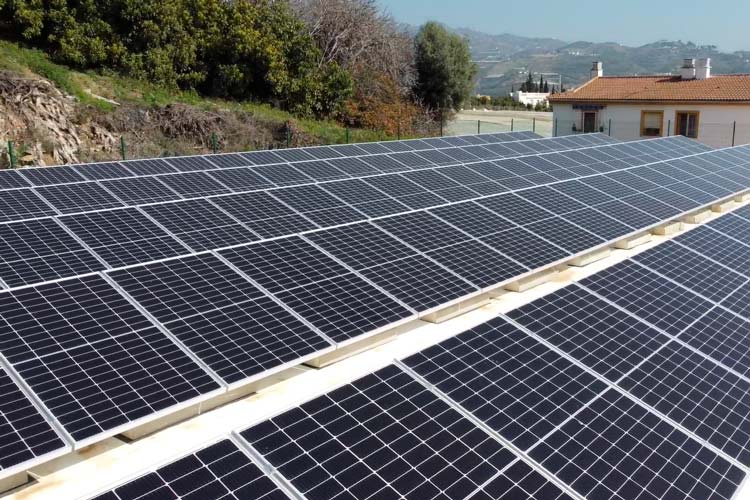Hidralia apuesta por la descarbonización de los municipios y la trasformación digital para impulsar la transición ecológica
La empresa, líder en la lucha contra el cambio climático en Andalucía que alcanzó la neutralidad en carbono en 2019, se presenta como un aliado estratégico para el acompañamiento, asesoramiento e implantación de medidas innovadoras que permitan avanzar hacia la transición ecológica de las ciudades y la consecución de su Agenda Urbana
Apostar por la innovación y la digitalización es una necesidad. Para conseguir transformar nuestras ciudades en inteligentes, resilientes y verdes, y para cumplir con los objetivos marcados por la Agenda 2030, especialmente en territorios tan vulnerables al cambio climático como Andalucía, donde sus consecuencias son cada vez más palpables.

Aquí juega un papel muy destacado la aplicación de medidas efectivas que permitan a los municipios andaluces alcanzar un objetivo muy concreto: la descarbonización. Como referente en la lucha contra el cambio climático y apostando por un modelo de gestión basado en la economía circular, Hidralia -empresa medioambiental experta en la gestión del ciclo integral del agua - lleva años calculando y reduciendo su huella de carbono, habiendo alcanzado finalmente la neutralidad completa en toda Andalucía, por lo que fue reconocida con el Premio Medio Ambiente de la Junta de Andalucía.
La eficiencia energética es uno de los pilares fundamentales en los que Hidralia ha basado su estrategia para lograr la neutralidad en carbono. La empresa ha apostado por la generación de energía verde con el fin de alcanzar la autosuficiencia energética. Por ello, y en toda Andalucía incluyendo a sus empresas mixtas, Hidralia cuenta con una capacidad total de generación de energía verde de más de 13 GWh/año, habiendo puesto en marcha a lo largo de 2021, diez nuevas actuaciones de generación de energías renovables con una capacidad equivalente de 266 MWh/año. Una de las actuaciones más relevantes ha sido la instalación fotovoltaica para dar suministro a un bombeo aislado en Algarrobo (66 MWh/año).
Desde 2017, Hidralia ha conseguido una reducción total de consumo equivalente a más de 7,5 GWh/año, convirtiendo la reducción de emisiones en un eje fundamental de su estrategia. Esto ha permitido evitar la emisión de más de 2.300 TCO2eq/año. A modo de ejemplo, sólo Hidralia ha conseguido reducir su huella de carbono un 41,2% desde 2017.
La empresa integra este planteamiento en su filosofía de gestión, en todos los proyectos y las acciones que realiza, y pone su experiencia al servicio de los municipios con el fin de preservar el entorno y fomentar la sostenibilidad, así como mitigar y promover la resiliencia de las ciudades ante los efectos del cambio climático.
Innovación para alcanzar los objetivos
La innovación y la transformación digital son fundamentales para alcanzar estas metas. Hidralia, perteneciente al Grupo Agbar pone a disposición de los municipios toda su experiencia en la gestión sostenible del agua y el uso de soluciones digitales que, implementadas en su red Dinapsis, ayudan a las ciudades en su camino hacia la construcción y consecución de su Agenda Urbana.
Dentro de estos servicios digitales se encuentra el Observatorio de indicadores ambientales y de ciudad, que permite visualizar la evolución temporal y espacial de un catálogo de hasta 150 indicadores relacionados con distintas temáticas: Modelo de ciudad, Salud ambiental, Resiliencia, Turismo sostenible, Descarbonización e Infraestructura verde/azul.
El registro de información de origen satelital en relación con indicadores ecosistémicos y de modelo de ciudad constituye una herramienta de gran utilidad para los ayuntamientos en la definición y seguimiento de su Agenda Urbana, al identificar el grado de cumplimiento en cuanto a valores límite o recomendaciones de organismos independientes de cada uno de los indicadores seleccionados, ayudando a identificar qué áreas o distritos constituyen los puntos críticos sobre los que plantear actuaciones de mejora encaminadas a paliar los efectos adversos del cambio climático en el municipio. Además, la disponibilidad de datos mensuales posibilita realizar un seguimiento continuo de la evolución de las medidas y la adopción de acciones correctores en el caso de que los resultados obtenidos difieran de los esperados. La configuración de la herramienta garantiza que los datos adquiridos son transparentes y trazables, facilitando al consistorio las labores de comunicación a la ciudadanía, contribuyendo al cambio social y a la creación de conciencia pública en relación con la sostenibilidad y el cambio climático.
De este modo, los ayuntamientos pueden identificar las oportunidades y áreas más sensibles para una intervención; definir objetivos de mejora a medio y largo plazo, basados en datos objetivos e independientes, que sean verosímiles y alcanzables y, gracias a la monitorización en continuo, evaluar el grado de consecución del progreso de las actuaciones.
Como ejemplo destacable, Hidralia, en colaboración con el centro tecnológico del agua, Cetaqua, plantea proyectos cuyo objetivo es, a través de estos indicadores, abordar la planificación de las infraestructuras verdes de un municipio con mayor eficacia. Con los indicadores recogidos en el entorno urbano se puede saber cuáles son sus beneficios, su estado y cómo se pueden implementar estrategias de desarrollo sostenible que pongan en valor los espacios verdes urbanos (tanto intraurbanos como periurbanos) y su aportación a la ciudadanía, mediante el desarrollo de una metodología de análisis espacial del territorio.
